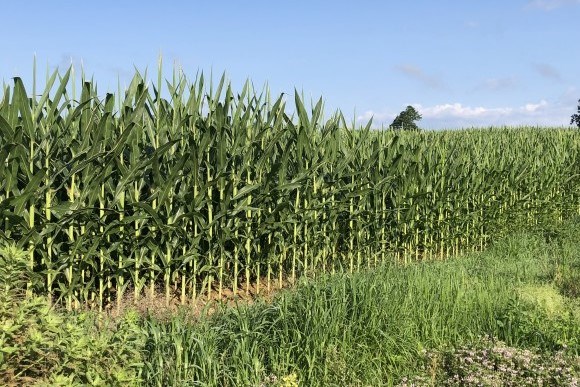The U.S. Department of Agriculture (USDA) announced Thursday further details of the $16 billion aid package for American agricultural producers, who can begin to sign up for the program Monday, July 29, at local Farm Service Agency (FSA) offices. The first of the payments will be made in mid- to late August, with later payments in November and early January.
Poor weather and flooding delayed farmers from planting throughout the Corn Belt. Those who filed a Prevented Planning claim and planted an FSA-certified cover crop with the potential to be harvested qualify for a $15 per acre payment, according to the USDA. Acres that were not planted in 2019 are not eligible for a Market Facilitation Program payment.
“This is a step in the right direction when the weather impacted such a vast area of acres that we have not seen in many years,” Pennsylvania farmer Bill Baker wrote to AccuWeather. “Never in my mind was the ‘hope’ or ‘guarantee’ that the government would come through with a program.
“The number one reason to try to plant and replant was to get a crop in the ground to have something to feed the animals or, if possible, to grow and sell the crop,” Baker added. “Even being able to get a cover crop to hold the soil to prevent erosion is always the goal of a farmer, being good stewards of the land.”
The USDA’s program follows last year’s $12 billion aid program, which played a role in this year’s program, according to U.S. Secretary of Agriculture Sonny Perdue. “Our team at USDA reflected on what worked well and gathered feedback on last year’s program to make this one even stronger and more effective for farmers,” Perdue said in a news release.
That’s the good news for farmers. There are still worries unrelated to the USDA program.
“Our biggest concern at this point is whether the crop will finish,” Nebraska farmer Edwin Brummels wrote to AccuWeather. “We will need good weather in late August and September to achieve normal yields.”
“The days are getting shorter, and harvest will be here before we know it,” Nebraska farmer Justin Mensik wrote to AccuWeather.
For the sixth straight week, the condition of corn and soybeans considered “good” or “excellent” has been 60% or lower. Monday’s USDA report had the condition of corn at 57 per cent and the condition of soybeans at 54 per cent, according to data from 18 key corn- and soybean-producing states.
Last year at this time, corn was at 72 per cent and soybeans were 70 per cent.
"I expect it will either stay the same or improve a little bit, by 1 or 2 percentage points,” said AccuWeather Senior Meteorologist Jason Nicholls. “The temperatures have been favorable, and I think they’ll remain that way for another week or so.
“But we’re a little bit concerned about a weather pattern 14 days from now setting up in the upper atmosphere called a blocking pattern, and that can sometimes force cool air from Canada down into the Midwest,” Nicholls said. “It’s hard to forecast this far out, but a worst-case scenario could be as much as 5 degrees below normal for four to five days and that’s pretty significant.
“If it ends up being just 2 to 3 degrees cooler for two to three days, then it’s not a big deal. That period of time, though, is going to be pretty important,” he added. “Cooler weather slows growth of the crops and makes them more vulnerable to a freeze.”

